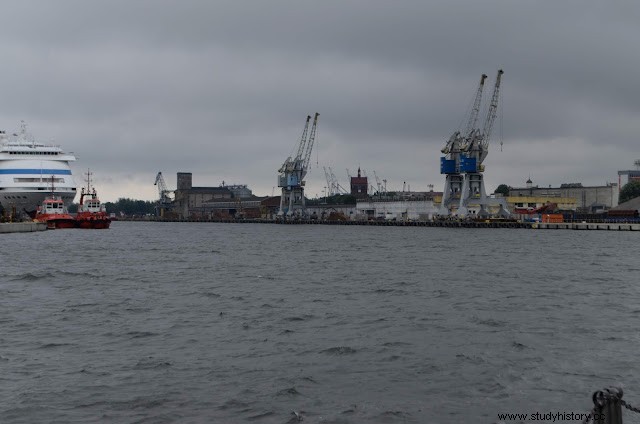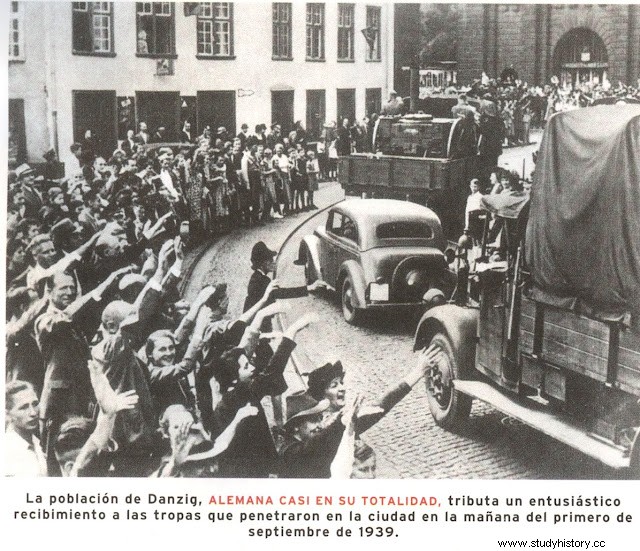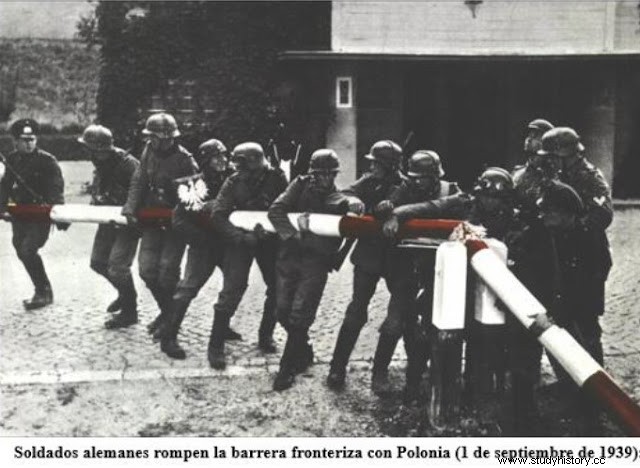 |
After coming to power, he began negotiations with Warsaw that culminated in the Non-Aggression Declaration or Pact (01.26.34) in which, without recognizing the Polish borders, Germany undertook not to resort to war to solve their problems with Poland and not to intervene in the problems of the German minority in Poland. The Declaration was valid for 10 years. It responded to Hitler's strategy of weakening the French position in Poland.
After the annexation of Austria and the Sudetenland crisis, Hitler's next desires were in Poland. On 28.04.39 Hitler specified the immediate objectives of him in Poland:
- Recovery of the city of Danzig.
- Construction of a railway and a road through the "Polish Corridor" that would unite both Prussias with an extraterritorial statute for the area where it was built.
In another entry I have dealt with the German-Soviet Pact of August 23, 1939, which contemplated the division of Poland between the two signatories. Hitler set the invasion of Poland for 26.08, but had to cancel the offensive before the Italian declaration that he could not go to war until 1942 or 1943 and the signing of an Anglo-Polish Treaty (25.08). The day before (24.08) Chamberlain declared in the House of Commons that Britain would keep its commitments to Poland.
MUTUAL ASSISTANCE AGREEMENT BETWEEN THE UNITED KINGDOM AND POLAND
ARTICLE I
If either Contracting Party becomes involved in hostilities with a European Power, as a consequence of an aggression by the latter against the Contracting Party, the other Contracting Party will give the Contracting Party involved in hostilities all the support and assistance with all its power.
ARTICLE II
(1 ) the provisions of Article I shall also apply in the case of any action by a European Power, which clearly threatens, directly or indirectly, the in-dependence of one of the Contracting Parties, and which is of such a nature that the Party in question considers that it is vital to oppose with the use of its armed forces.
(2) If any of the Contracting Parties is involved in hostilities with a European Power as a consequence of actions of that Power that threaten the independence or neutrality of another European State of ma in such a way that it constitutes a clear threat to the security of that Contracting Party, the provisions of Article I shall apply, without prejudice, however, to the rights concerning the other European State.
ARTICLE III
If a European Power attempts to undermine the independence of one of the Contracting Parties by economic penetration procedures or in any other way, the Contracting Parties shall support each other in assisting such attempts. If the European Power concerned then embarks on hostilities against one of the Contracting Parties, the provisions of Article I shall apply.
On 25.08 Mussolini suggested a conference to solve the problem, like a new Munich. He proposed it again on the 31st. At the same time, that same day Hitler tried to separate France from Poland announcing that he had no hostility towards France and that " personally, I have renounced Alsace and Lorraine ". On the 28th France and England suggested German-Polish negotiations.
All in vain, on September 1, 1939, the German battleship SMS Schleswig-Holstein bombarded the Polish fort of Westerplatte, located at the mouth of the Vistula in the Baltic (guardian of the city of Danzig, today Gdanks) causing great damage. It was the start of World War II. Danzig was annexed to Germany. On the same day, the German Army entered Poland, launching Operation Fall Weiss for the occupation of Poland.
 |
 |
Hitler fabricated a crude excuse to justify the invasion of Poland. On the afternoon of the 31st, an inmate of a German concentration camp was taken by the Gestapo to a radio station in the border town of Gleiwitz, dressed in a Polish army uniform and shot dead. The Poles had tried to invade Germany!!
“The Polish state has rejected the establishment of peaceful relations, as I have wished, and has resorted to arms. Germans in Poland are driven from their homes and persecuted with bloody terror. A series of border violations, intolerable for a great power, prove that Poland, in the long run, will not respect the borders of the Reich. In order to put an end to this madness, I have no alternative but to respond with force against force from now on.” Hitler, 1-09-1939.
The German invasion plan had been prepared for months before, that is, it was not a response to the Polish refusal to grant an extraterritorial status to the highway and the railway crossing the Danzig corridor.

Two days later France and Great Britain. in response, they declared war on Germany.
The USSR invaded Poland on September 17. On the 28th Ribbentrop went to Moscow to delimit the borders of both countries in Poland (it was like a second German-Soviet agreement).
